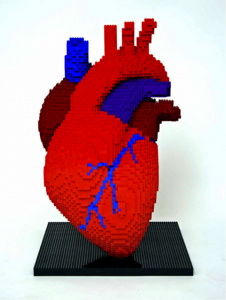When I was a child, I would sit on my living room floor playing with my Lego set for hours on end. I recall building police cars, giant spaceships and all kinds of other amazing structures. My weekend mornings always began the same way: I would dump my box of Legos onto the floor and start to ponder what I would build that day. I would begin by raking through the Lego pieces with my fingers and collect those that I would need. Piece by piece, I would build my vision into reality. It didn’t always turn out exactly as I had imagined, but something new was always realized and it would put a smile on my face.
Today, my life as a Development Scientist in the Biomaterials and Devices platform at the Centre for Commercialization of Regenerative Medicine (CCRM) is not that different. The main focus of our platform is to identify promising biomaterial technologies from the laboratory setting and enhance them, pushing them one step closer to being a commercial product. A large portion of my time is also spent dreaming up novel biomaterial-based products. This is where my years of building Lego spaceships comes in handy.
If you think about it, the field of biomaterials is not so different from playing with Lego: we start by choosing appropriate materials or polymers for a given application (i.e. choosing the Lego piece with the right shape, colour and size); we devise methods to get these materials to assemble in different ways (i.e. stacking Lego pieces); and, once completed, we assess the interaction of these biomaterials with cells (i.e. we play with our Legos!).
The concept of biomaterials as building blocks similar to Lego pieces is definitely not new. Alison McGuigan and Michael Sefton from the University of Toronto have used this idea to create a modular approach to tissue engineering. They fabricate tiny collagen-based blocks with cells inside that can fuse together to eventually build larger sized organs such as hearts, livers or pancreases.
Other researchers, such as Ali Khademhosseini from Harvard-MIT, have adopted a similar concept and created so-called ‘living Legos’. These gel-like building blocks, that also contain cells, can be fabricated in different geometrical shapes that can then be stacked together to form living organs. All of this makes me think that I wasn’t the only biomaterials scientist who spent their childhood playing with Legos!
The next time you see children playing with Legos, stop and imagine what the future may have in store for them. They might just be devising how to create a living human heart.
Financial Disclaimer: I have no financial interests in Lego to declare (I just thought I should clarify that).
Patrick Blit
Latest posts by Patrick Blit (see all)
- Right Turn: Regenerative Architecture? - December 13, 2013
- Novel biomaterial devices provide a breath of fresh air - August 6, 2013
- Lego® and biomaterials: the building blocks of life - March 26, 2013







Comments